Pai has been on our loose “agenda” of a place we want to visit and experience. We generally approach most places we go to as a potential home base. “Could we live here?” is a question we always ask ourselves and each other. It gives a different approach to a place.
Adam traveled to Pai solo and returned to Chiang Mai with general thumbs up about the beauty of the area. We overlap with him for a few hours, before we left Chiang Mai on a small bus bound for the mountainous small town (3,000 residents), of Pai.
The journey is spectacular in terms of beauty and vistas. Gorgeous thick jungle, tall lush trees and hints of the mountains to come. The road to Pai is known for its 300 or so sharp curves and bends. Pretty much non stop winds and crazy turns for the last 2 hours of the 3 hour drive. Whew! Glad to get out of the bus which drove way too fast for the comfort of those of us aboard. A Chinese woman in front of us was using a bag to throw up in (not that uncommon apparently.)
Pai has a reputation it gained in the 70s and 80s as a “hippy” town. There are indeed remnants of this lifestyle, but today its mostly a combination of 2 very different groups of visitors. The dominant group is international backpackers and the other is Chinese young couples. There are very few cars that go through the small town which allows it to be a nice walking town.
The mountainous environment give Pai an air of Boulder, Colorado, perhaps a few decades ago. At any rate, it’s a perfect place to ride a scooter to the various waterfalls and through the countryside.
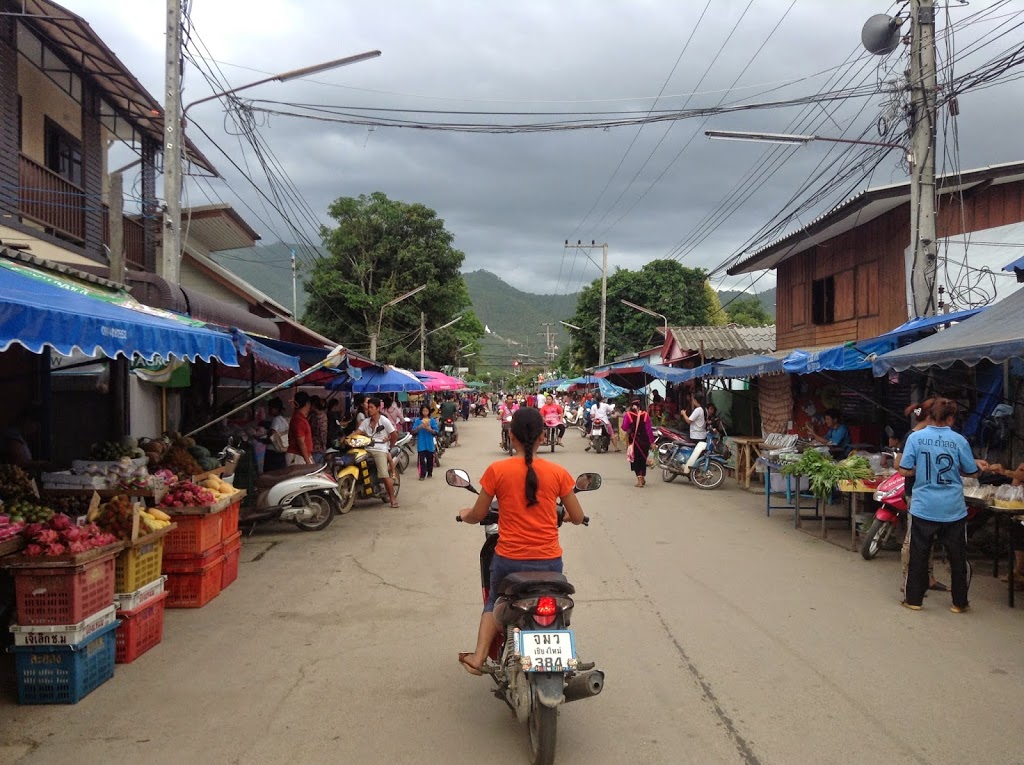 |
| One of the main streets in town, where locals come to market. |
 |
| Dusk comes to Pai and the walking street is the place to be…. Food vendors and small cafes line the streets. |
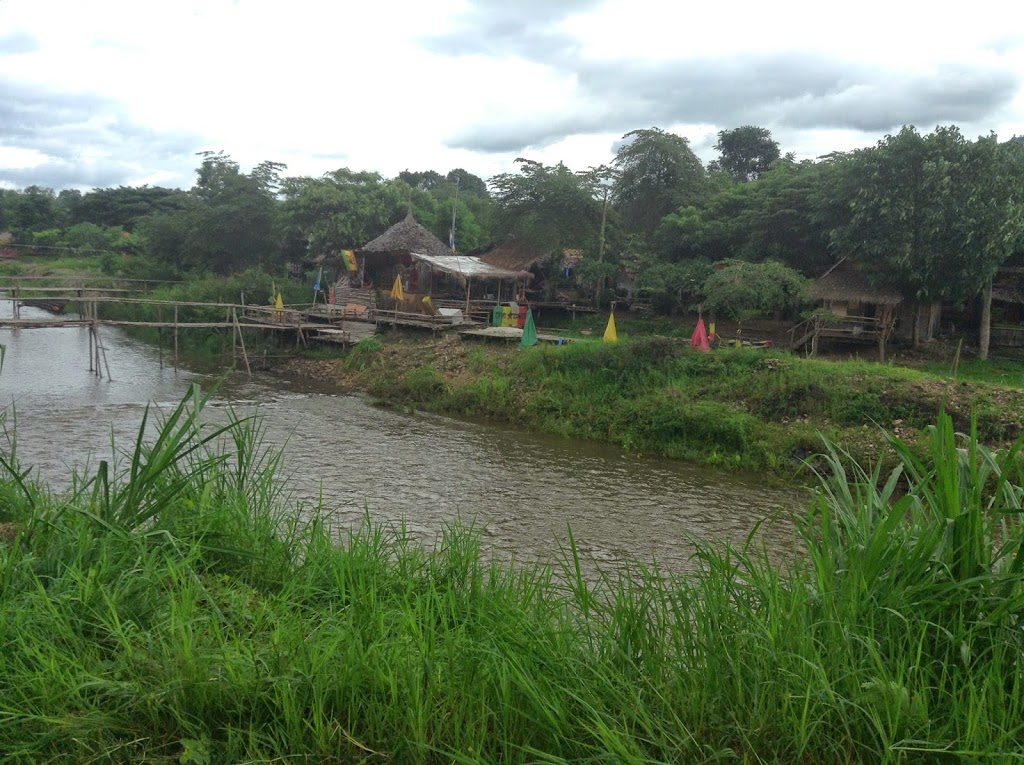 |
| The river which flows through Pai, has several very rustic bamboo bridges made out of bamboo splits |
In Pai, we opt for accommodations that are “rustic-chic”. Can’t resist the opportunity to stay in cute bamboo bungalows – a wink to CO2 Bambu…
 |
| Made almost entirely of bamboo with a few wooden accents. The roof over the front of the house is made from large dried leaves folded over numerous times and overlapped like roof “tiles”. |
 |
| The river is lined with bamboo and small places to stay and to relax and enjoy the scenic surroundings. |
A walk around town allows us to discover a river-side group of bamboo bungalows. We move to more rustic bungalows, as they are in a great setting right next to the river. At $12/night, awesome set up. Generally, the guest houses we stay at cost $15 per night, and at $20, we feel like we are positively splurging.
 |
| “Baan Pai Riverside” bungalows. |
 |
| Our last day and night in Pai were spent enjoying the flow of the river from our bungalow. |
Backpackers are drawn to the laid back, relaxed vibe and the offering of many activities in the area. Numerous waterfalls, hot springs, whitewater rafting, trekking to hill tribe people and bare back elephant riding through the jungle.
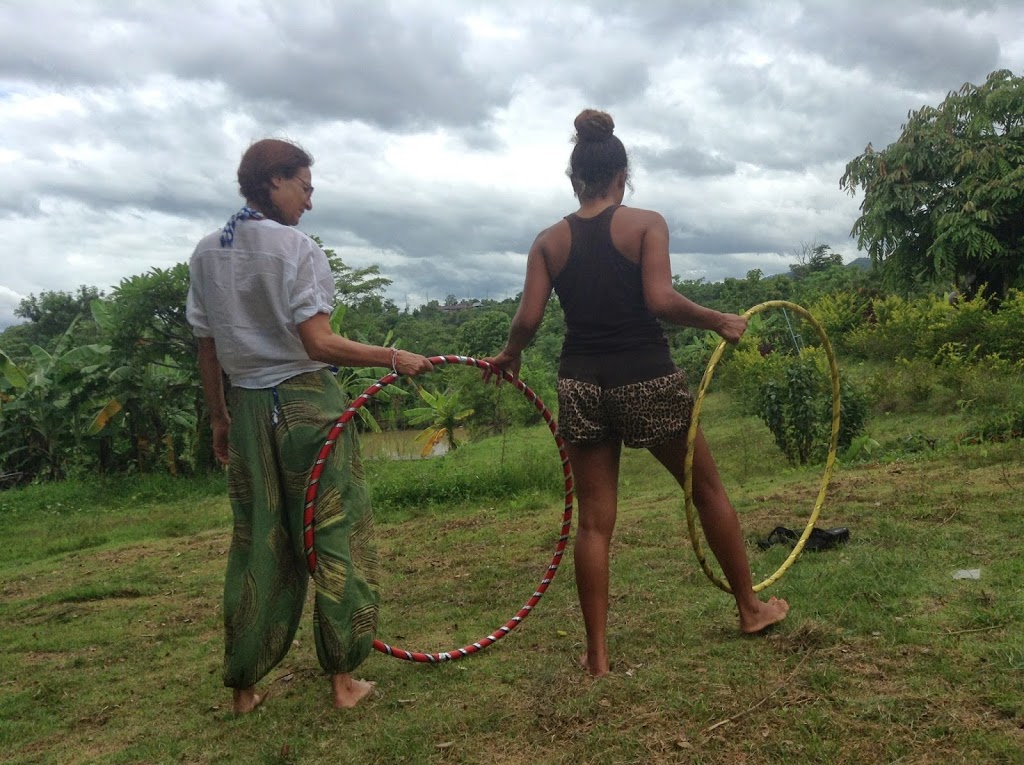 |
| Learning a few hula hoop tricks from a local. |
There is a new phenomenon in Pai’s tourism… It seems that a popular Chinese language movie was filmed in Pai and released last year. We can only surmise that it may have been the story of Chinese honeymooners, or young couple “discovering the world” together. Whatever the plot, it has resulted in the first surge of Chinese tourists in Pai. They are easily spotted: always perfectly attired with brand new purses, clothes that were evidently bought for the express purpose of their vacation. The women seem to have a specific image of what a “romantic vacation” looks like – they don big floppy hats and often equally flowing dresses that would be more apt for end of 19th Century France than 21st Century Thailand.
OK, so back to our stay in Pai. We wanted to take full advantage of the surrounding countryside and very fresh clean mountain air. So off to the waterfalls we go….
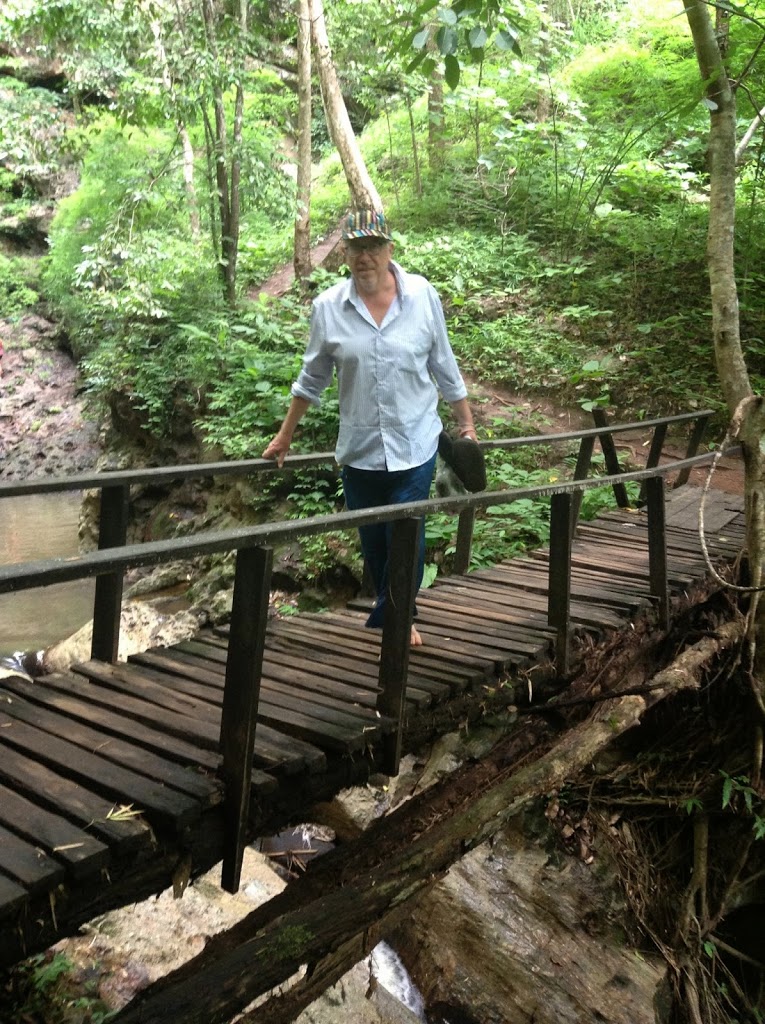 |
| Cross a bridge over the river, small path and then arrive at our first waterfalls. |
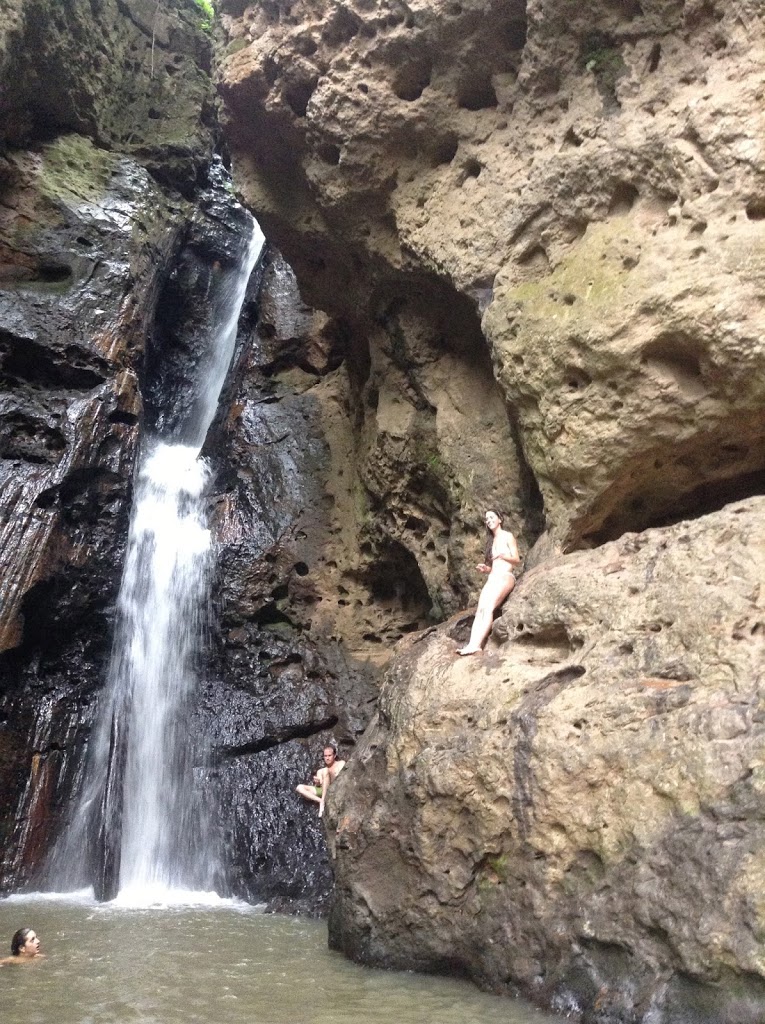 |
| A dramatic waterfall, provides a watering hole to jump into for those who brave the rocks. |
On another day, we head to our second waterfall, which is a series of falls and boulders and river.
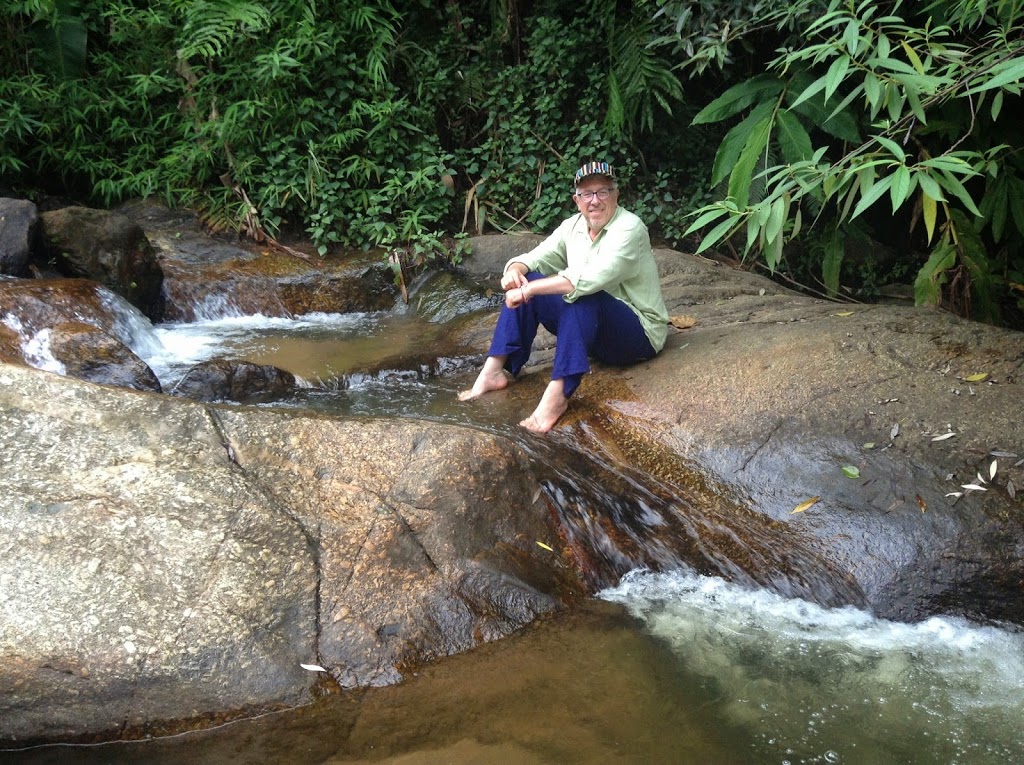 |
| It’s pretty cold. I do have a great photo of Ben in the freezing cold water. By special request only…as he is not keen for a photo of himself half naked all over the internet! |
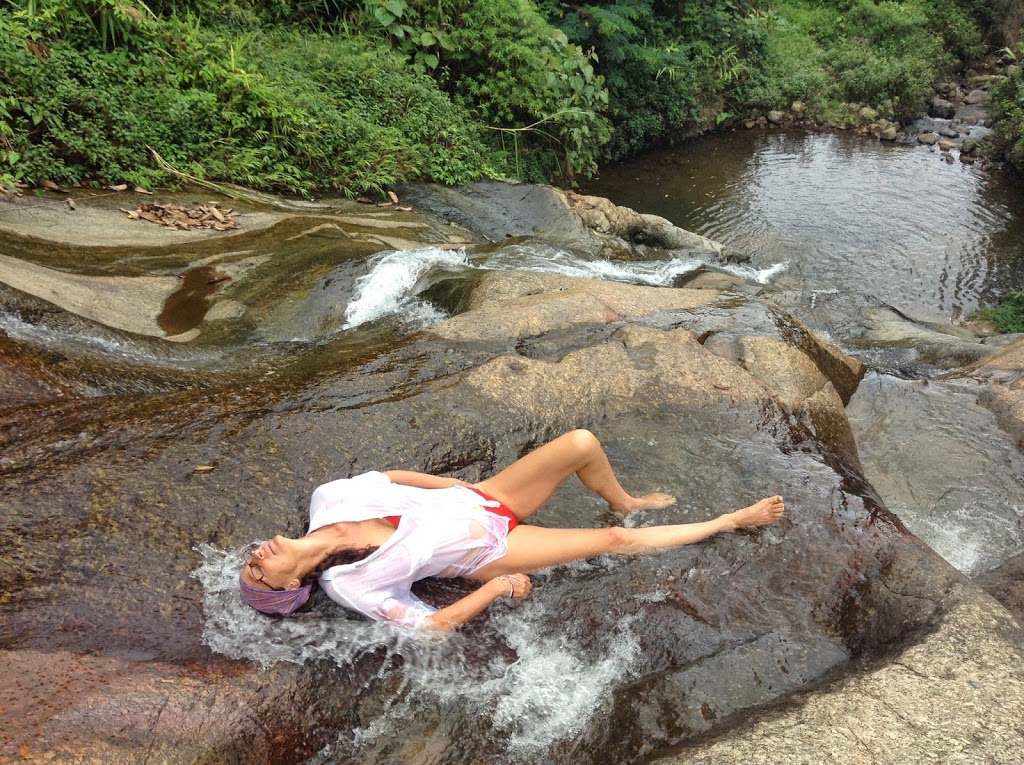 |
| Great place for a very refreshing head dip and a rest. Note the precipitous drop of the waterfall, to the pool below. |
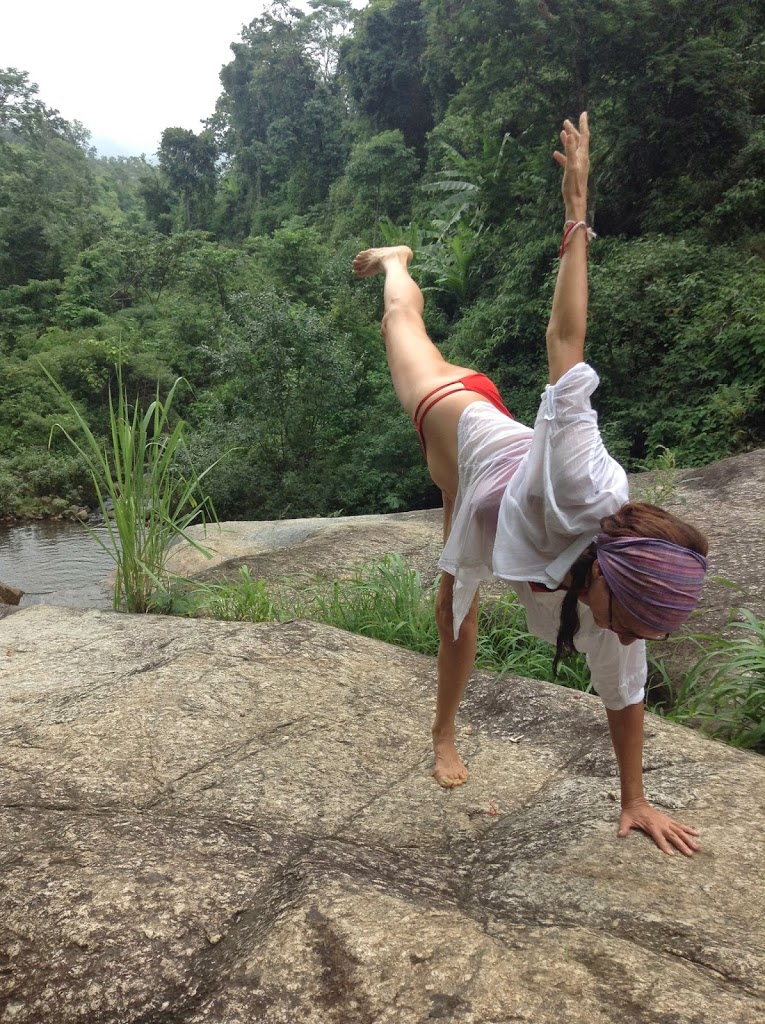 |
| Rocks full of crystal quartz, makes for good energetic grounding. This region of Thailand is rich with precious stones and crystals. There are small pieces of crystal to be found in the sand of the river. |
Animals encounters always enhance our travels. So here are some of our furry and feathery Pai friends…
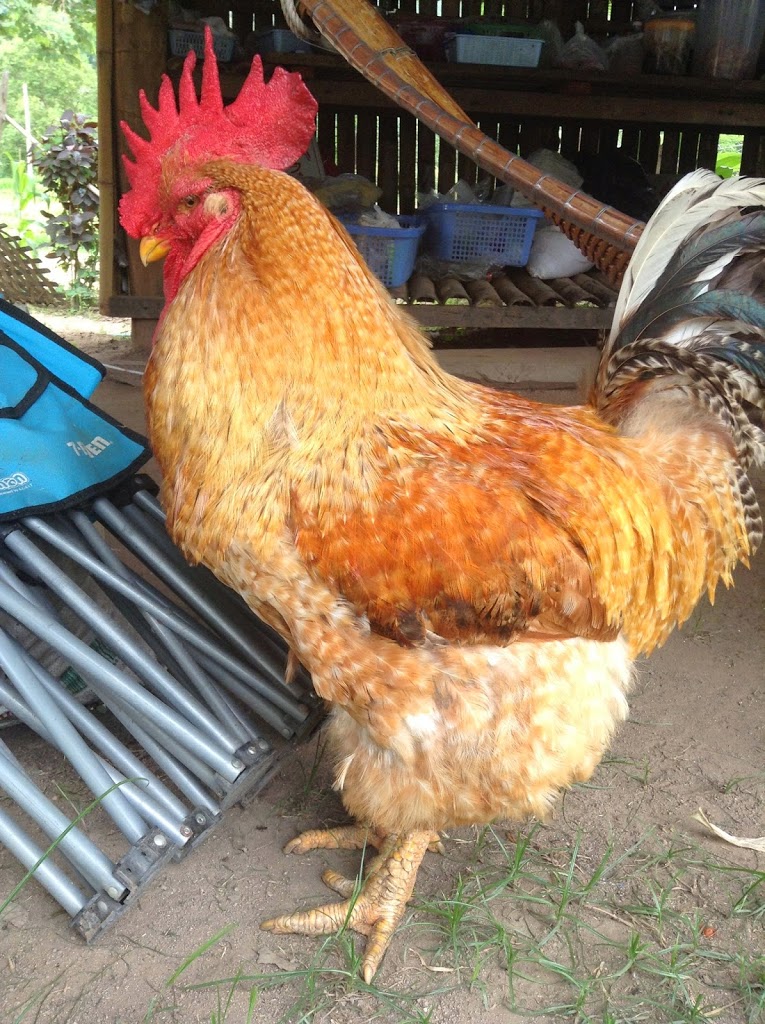 |
| Undoubtedly the LARGEST chicken either of us has ever seen. No wait, it is the largest chicken in the world. Must be! He is over 5 kilos (11 pounds), lives on a farm as a domestic pet. He is the size of a medium size dog and enjoys being stroked. |
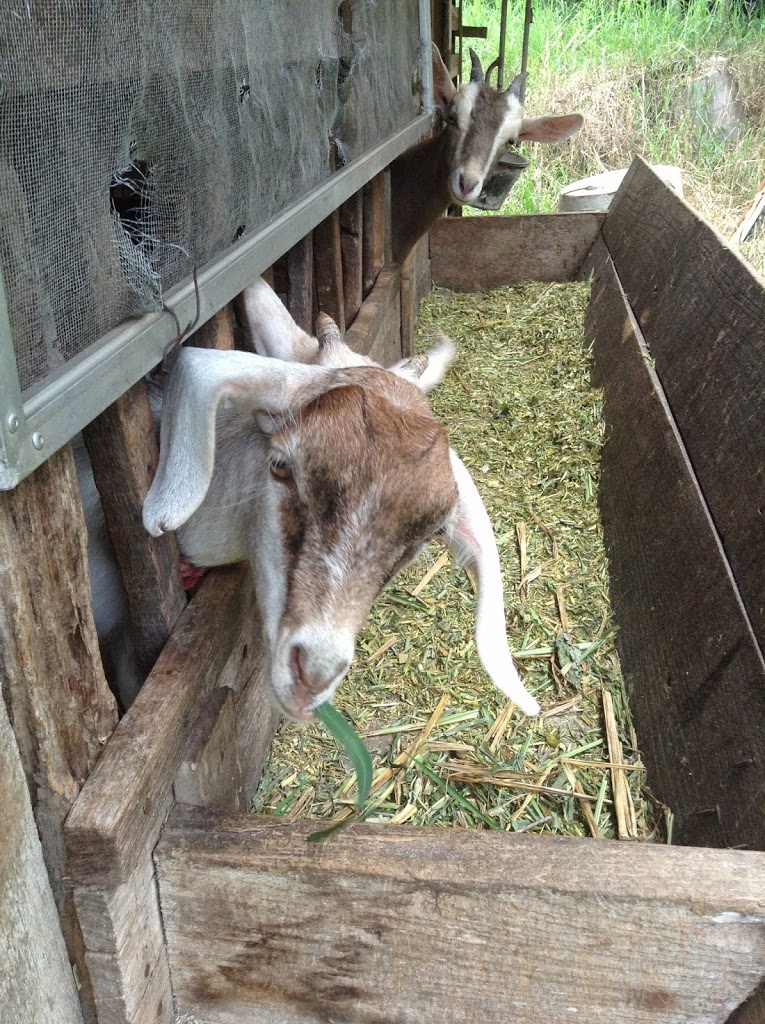 |
| The scent of goat milk has us saying hi to this little guy poking his head through his shed to take a look at us. |
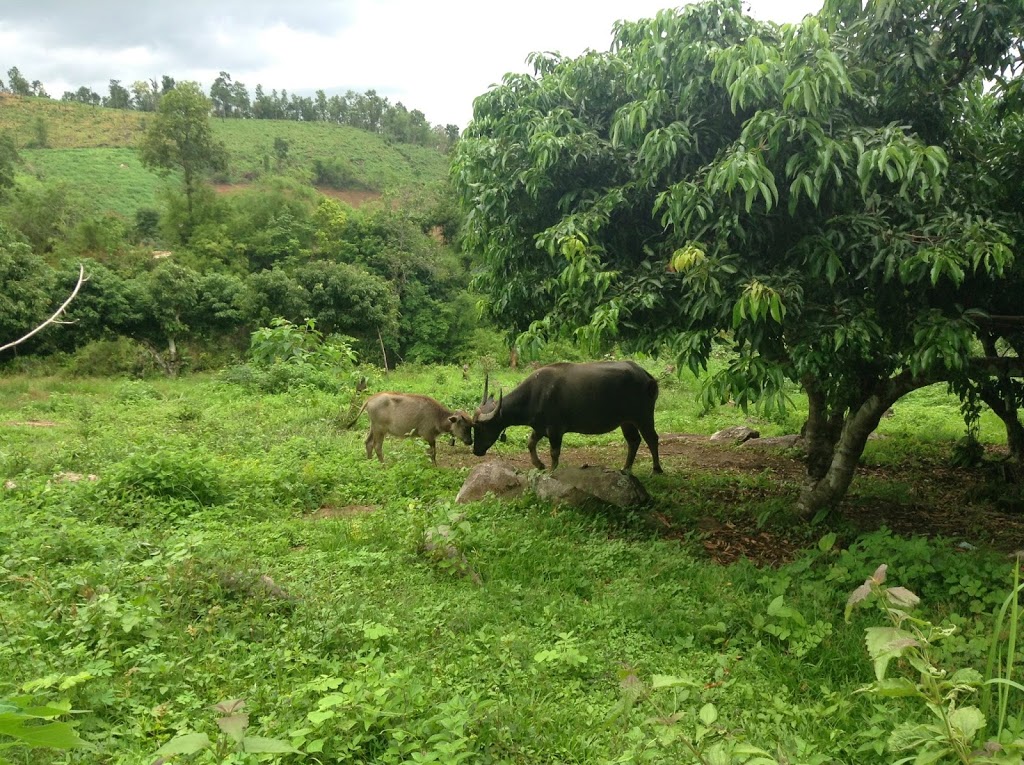 |
| A calf returns to it’s mom under the tree for a nose kiss. |
Meanwhile, Adam who is traveling with friends in the Chiang Mai region, is having his own animal encounters! Seems clear that his meeting with this adorable baby pachiderm trumps our large chicken, magnificent though he was.
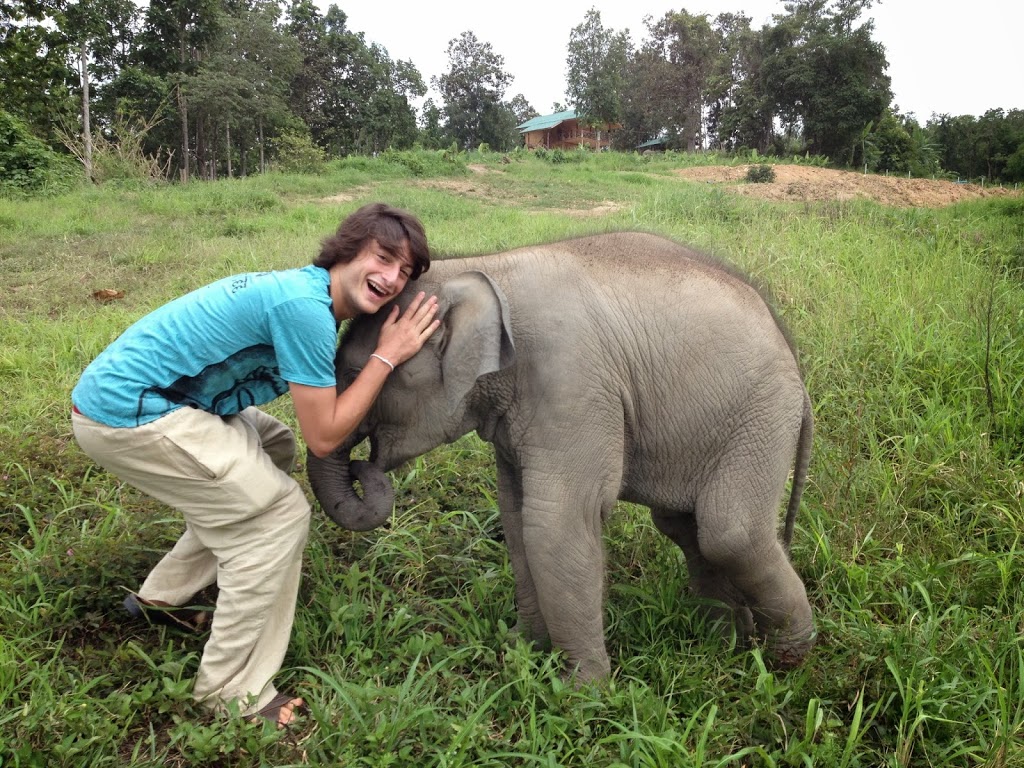 |
| This baby elephant and Adam are enjoying a mutual snuggle! |
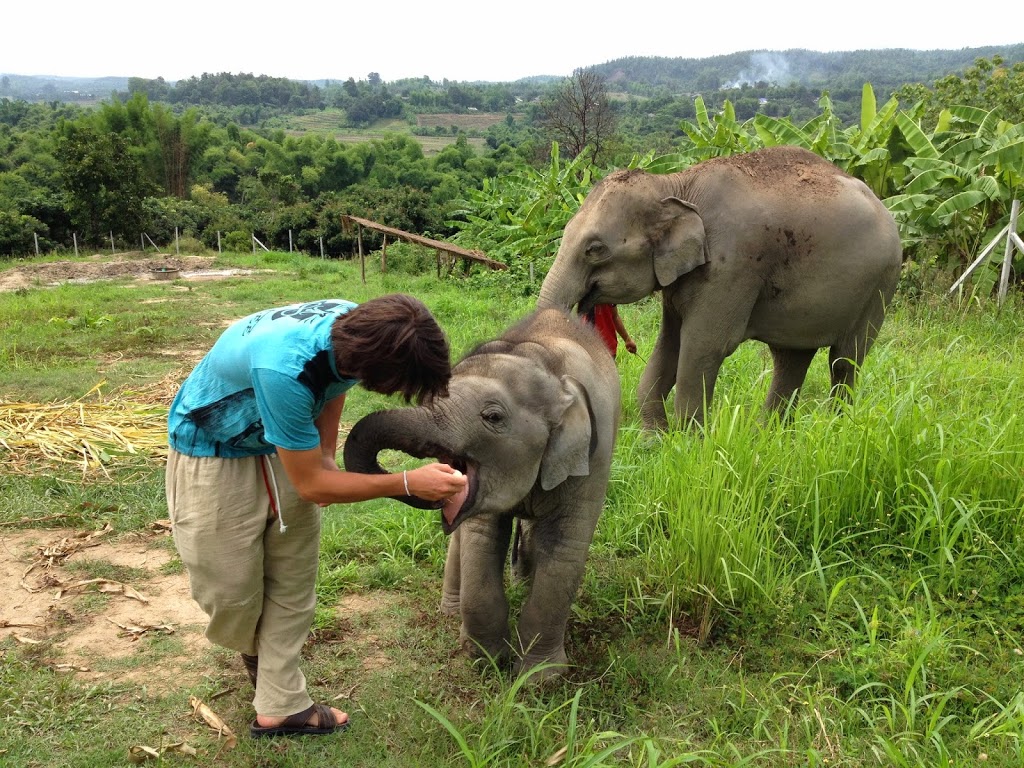 |
| Adam feeding a baby elephant North of Chiang Mai under the watchful eye of its mama. |
Pai sits smack in what used to be called the “Golden Triangle” (Northern Thailand, Myanmar, previously called Burma, and Laos). The Golden Triangle was Asia’s main Opium producing area. In the 18th and 19th Century, Opium was a major driver in this region’s economic development. Despite government efforts to crack down on this now illicit trade (since 1959), and a significant reduction in the quantity of opium grown in Thailand, the facts remain that the mountainous region, populated by hill tribes, are incredibly difficult to police and Shan indigenous people have relied on opium production now for multiple generations. What was once an open trade has therefore gone “underground”. Evidence to the continued practice – as we were riding our scooter through the nearby mountains, we are flagged by a group of elderly hill tribe women. We stop and are offered “Want opium? heroin?”. We politely decline, (although Peta can’t help but engage with the 70+year old Shan woman, asking her if she smokes opium “Yes, everyday… Very good, very good. You try…” And Peta replies with an “Mai khop khun kha…. No thanks.”
The Shan indigenous group inhabits the mountainous region that spans Northern Thailand, eastern Myanmar and Western Laos. Across these three countries, the Shan population numbers about 6 million and speak their own distinct language. Their origin in this region dates back to about one thousand years ago when they migrated South from Hunan China, an origin still evident in their physionomy, compared to their Thai compatriots.
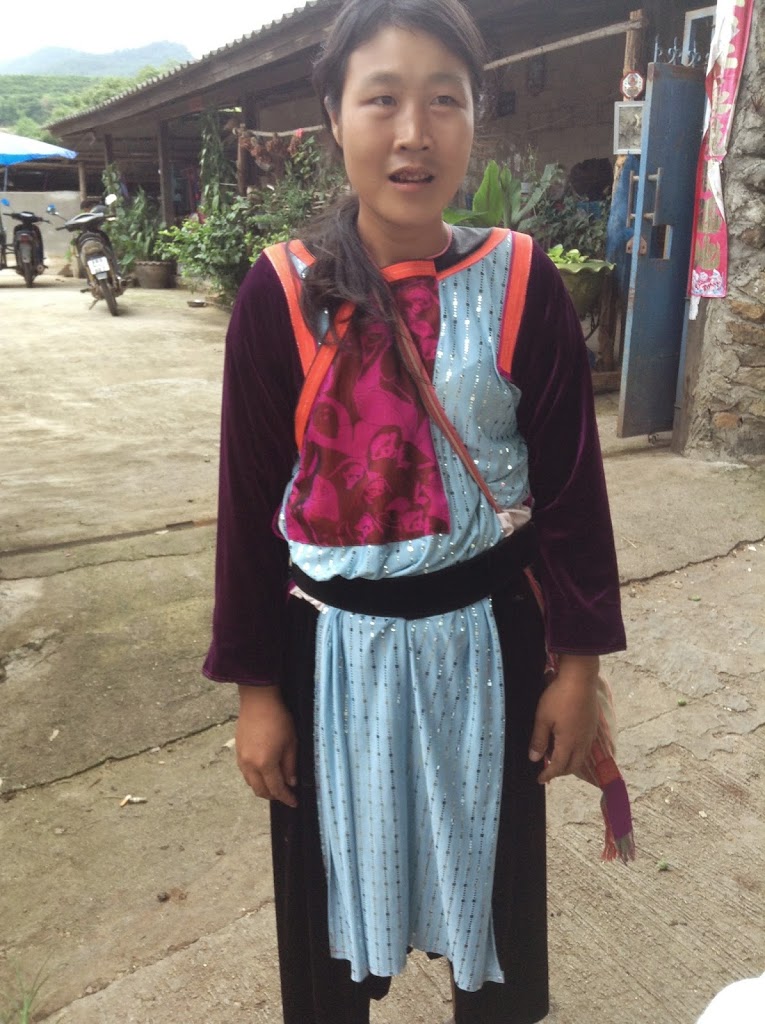 |
| Shan hill tribe young woman. |
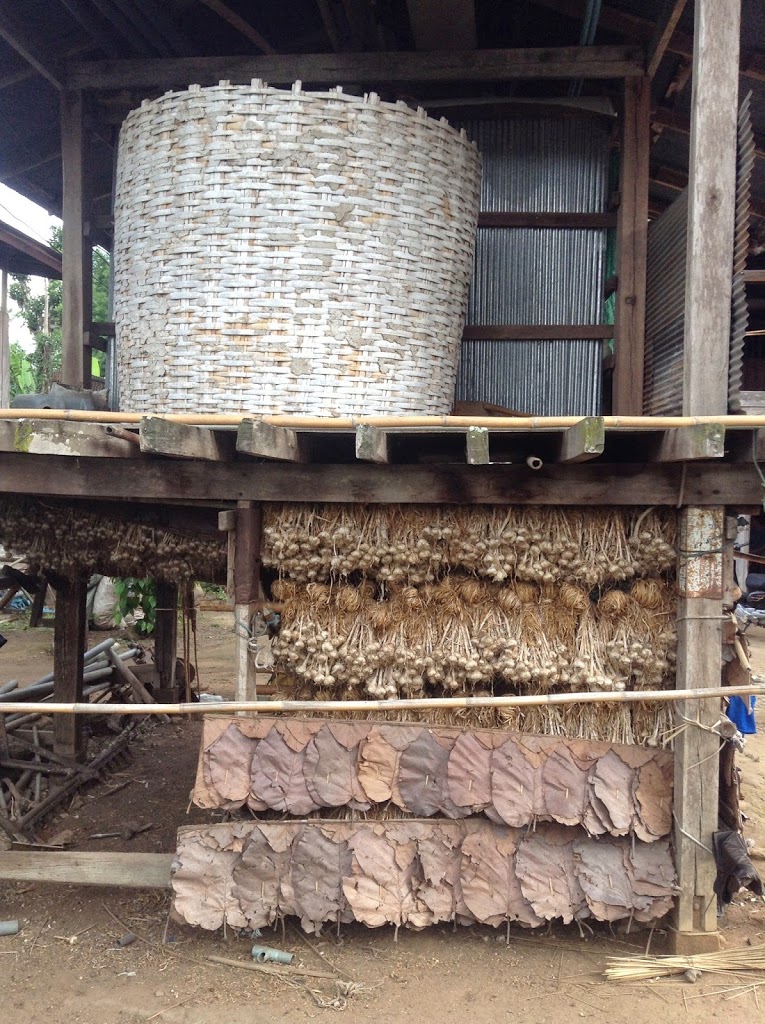 |
| At the bottom large leaves are drying, to be used (by folding) as roof “tiles.” Above them are bundles of garlic drying. |
The Shan people are Theravada Buddhists. The ethnic hill tribe community has suffered considerably as a result of its adversarial relationship with Myanmar’s military Junta. Their young men are often conscripted “for life” and assigned slave like duties, with no pay. As a result many of them escape Myanmar to Northern Thailand as refugees. They are not however granted asylum / refugee status by Thailand, and therefore they are left to live as illegal cross border “migrants”. They wind up taking some of the most difficult jobs at lower wages than Thais would take, but their situation is still comparatively better than it is in Myanmar. They have fought a guerilla war with the current junta for several decades, seeking to establish (to no avail) an independent Shan State.
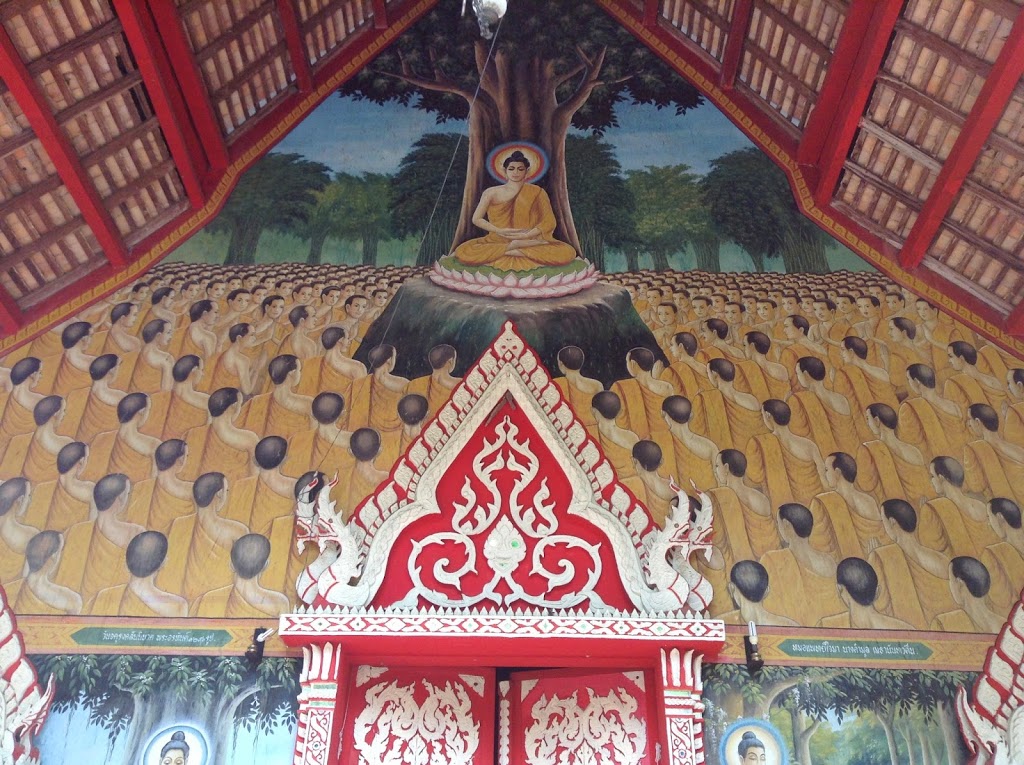 |
| Entrance to a wat. A painted wall above the entrance doors. The lotus flower plays an important and symbolic role in Buddhism and the monks in the painting, look like lotus petals to us. |




















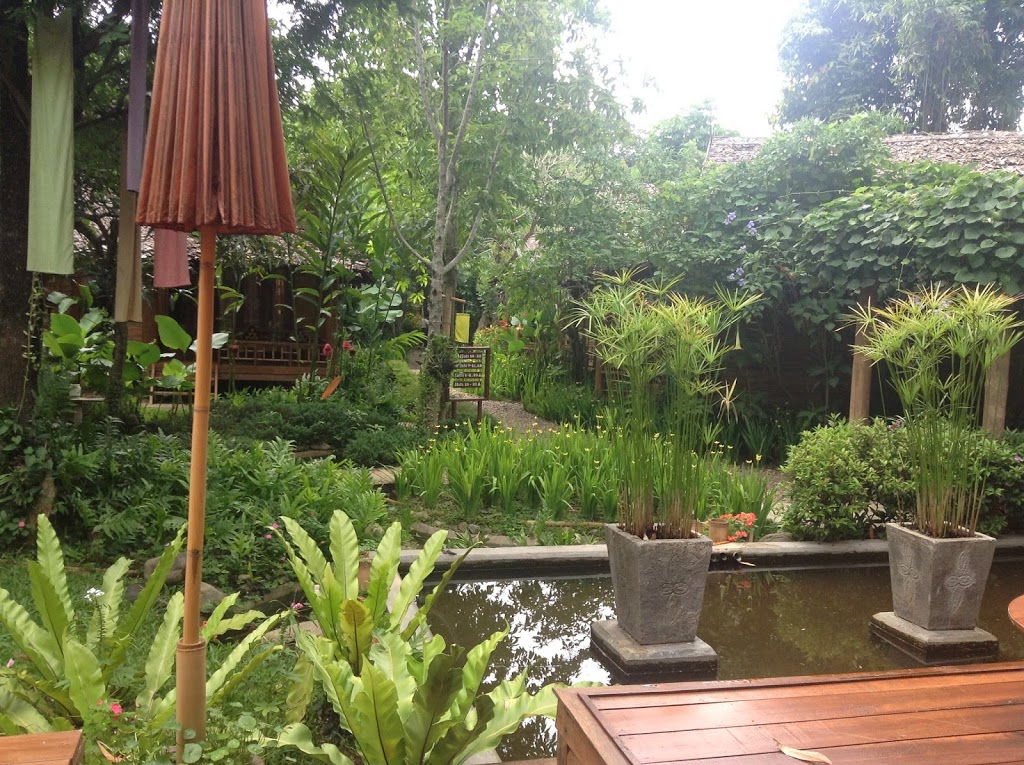

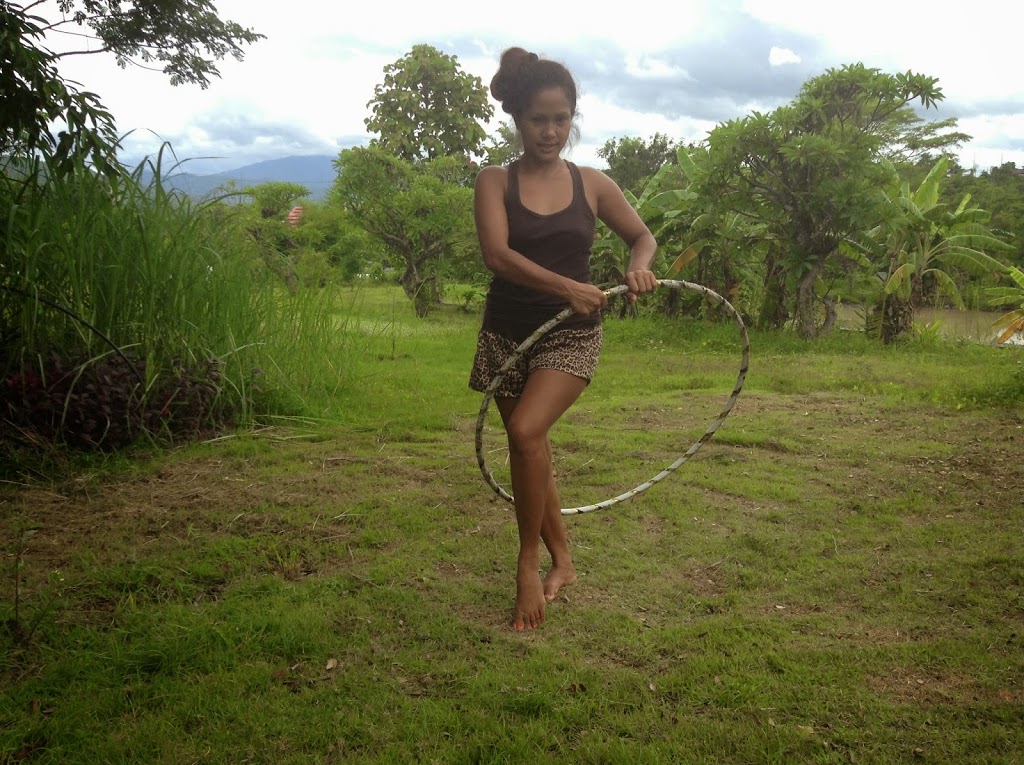
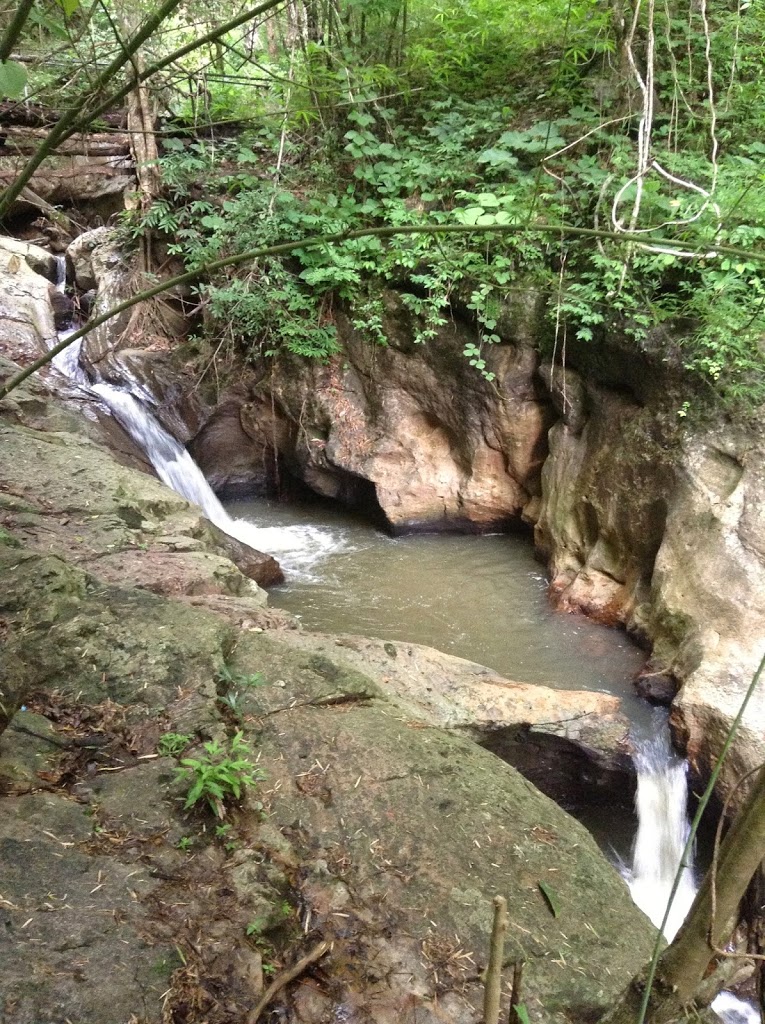


Whaaaat dude? Baby elephants? Are you serious? The city market looks captivating too. You lucky dogs!
The elephant plays a key role in Thai history, culture, religion and economy…. The kings of Thailand have traditionally maintained a stable of extremely rare white elephants. They are smaller in size, and have smaller ears than their African counterparts. So this baby comes from a long and important lignage in this part of the world.
p.s. can’t believe you passed on the thai mountain heroin. your loss! 😛
ha ha, Ezra. Heroin has never had any appeal – Thai or other…
Love it all but Adam’s face is priceless him and the baby elephant having a cuddle, I know its silly but you can’t help but go Haaaaaa if you see what I mean …. Its so interesting and you are so generous to share it with us all, I know how long it takes and how dedicated you have to be to keep your diary/blog going and boy you do a great job, keep enjoying yourselves but take care of yourselves. Can’t wait to visit you two in your next nest building episode !! xx Barbara and Tim Ford
Thanks Barbara… It’s nice to be “reconnecting” in this way. I do hope you two come and visit, wherever that may be… Time will tell…Ben
And yes, it does take some time to stay on top of this blog, but after having lost who knows how many sets of pictures (either to humidity for older albums, and to crashed hard drives with no back ups), this is a good way for us to keep a diary/album of our travels…
Love Adam and baby elephant and all of it:-)
Cool baby elephant, but the giant friendly rooster gets my vote.
Of course it does! We can no longer see a chicken and NOT think of you…
There is going to come a day when I take this trip… Not as lengthy as yours… But a trip to explore some of the beauty which you have generously shared. You will for sure be a part if my planning. ❤️❤️
Hope you do! Happy to help!